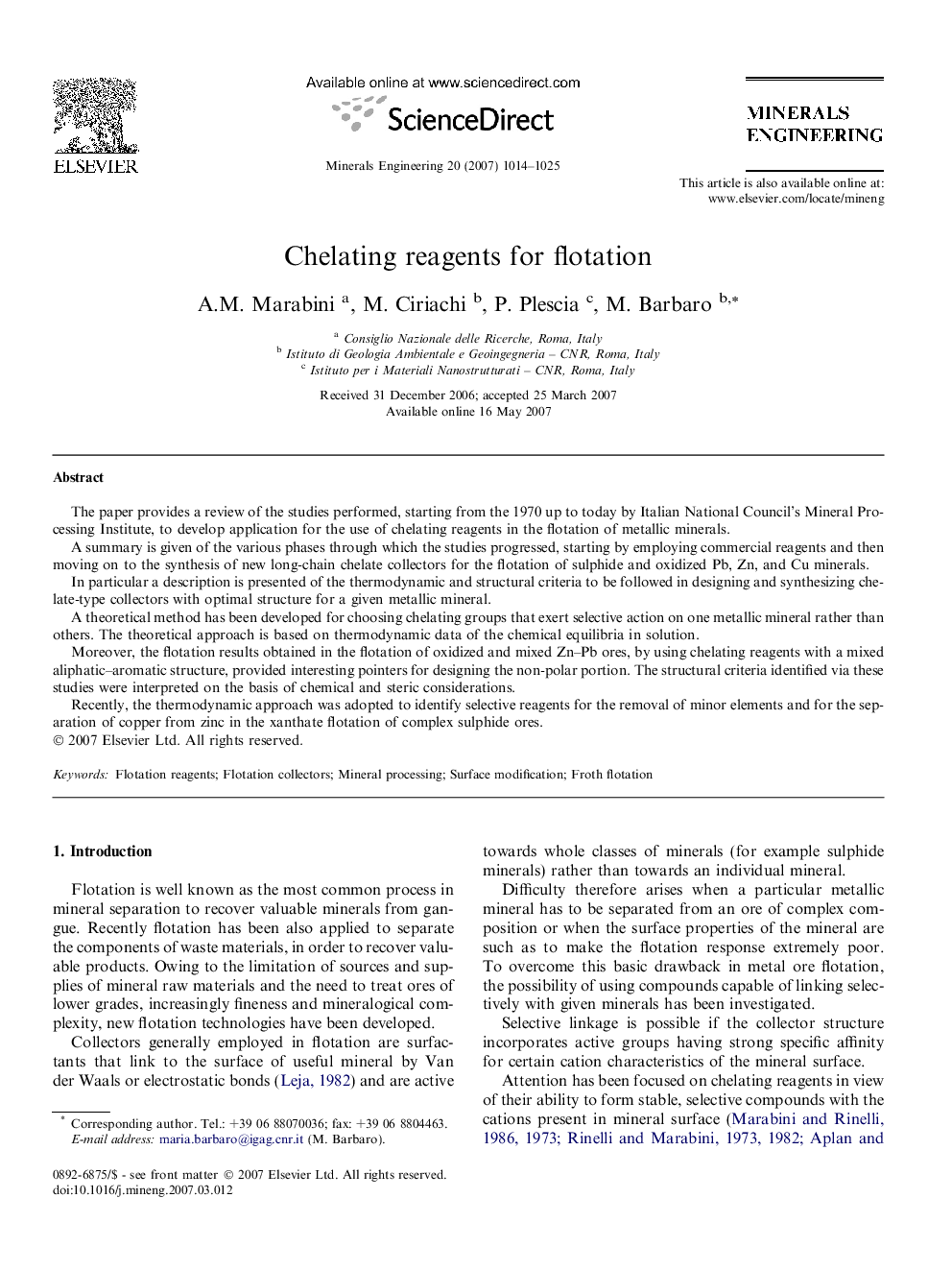| Article ID | Journal | Published Year | Pages | File Type |
|---|---|---|---|---|
| 234293 | Minerals Engineering | 2007 | 12 Pages |
The paper provides a review of the studies performed, starting from the 1970 up to today by Italian National Council’s Mineral Processing Institute, to develop application for the use of chelating reagents in the flotation of metallic minerals.A summary is given of the various phases through which the studies progressed, starting by employing commercial reagents and then moving on to the synthesis of new long-chain chelate collectors for the flotation of sulphide and oxidized Pb, Zn, and Cu minerals.In particular a description is presented of the thermodynamic and structural criteria to be followed in designing and synthesizing chelate-type collectors with optimal structure for a given metallic mineral.A theoretical method has been developed for choosing chelating groups that exert selective action on one metallic mineral rather than others. The theoretical approach is based on thermodynamic data of the chemical equilibria in solution.Moreover, the flotation results obtained in the flotation of oxidized and mixed Zn–Pb ores, by using chelating reagents with a mixed aliphatic–aromatic structure, provided interesting pointers for designing the non-polar portion. The structural criteria identified via these studies were interpreted on the basis of chemical and steric considerations.Recently, the thermodynamic approach was adopted to identify selective reagents for the removal of minor elements and for the separation of copper from zinc in the xanthate flotation of complex sulphide ores.
